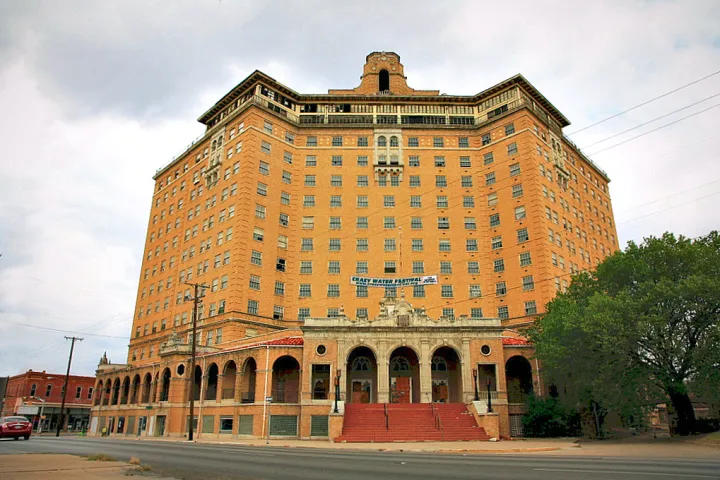The Baker Hotel in Mineral Wells, Texas, is a historic landmark with a rich history. Constructed in 1929, this 14-story building was designed by architect Wyatt C. Hedrick in a mix of Spanish Revival and Renaissance Revival styles. It quickly became a prominent destination due to its luxurious amenities and the purported healing powers of the mineral springs in the area.
During its heyday, the Baker Hotel attracted numerous celebrities and notable figures, including Judy Garland, Clark Gable, and the Three Stooges. It was renowned for its lavish ballrooms, rooftop garden, and the Baker Suite, which was one of the most luxurious accommodations in the state.
However, the hotel faced financial difficulties over the years, exacerbated by the decline in popularity of mineral spas and the onset of the Great Depression. It changed ownership several times and struggled to maintain profitability. The Baker Hotel finally closed its doors in 1972.
Despite its closure, the Baker Hotel remains an iconic symbol of Mineral Wells’ history and architectural heritage. Efforts have been made to restore and revitalize the building, with various proposals and plans put forward over the years. As of my last update, there have been ongoing discussions and initiatives aimed at preserving this historic landmark for future generations to enjoy.

Mineral Springs: One of the key attractions of the Baker Hotel was its location near mineral springs, which were believed to have therapeutic properties. People would visit the hotel to partake in the mineral baths and treatments, seeking relief from various ailments.
Ghost Stories: Like many old, abandoned buildings, the Baker Hotel has accumulated its fair share of ghost stories and paranormal legends. Some claim to have experienced supernatural phenomena within its halls, leading to its reputation as a haunted location.
Art Deco Interior: While the exterior of the Baker Hotel is notable for its Spanish and Renaissance Revival styles, the interior features stunning Art Deco design elements. From the lobby to the ballrooms, visitors would have been surrounded by the glamorous aesthetic of the era.
Preservation Efforts: Over the years, preservationists and local enthusiasts have campaigned for the restoration of the Baker Hotel. Various proposals have been put forward to convert the building into a mixed-use development, including hotel rooms, apartments, retail spaces, and event venues. These efforts aim to breathe new life into the historic landmark while respecting its heritage.
Community Impact: The Baker Hotel holds a special place in the hearts of many residents of Mineral Wells and surrounding areas. It’s not just a building but a symbol of the town’s past glory and potential future. The revitalization of the Baker Hotel could have a significant positive impact on the local economy and tourism industry.
Overall, the Baker Hotel’s story is one of resilience, community spirit, and the enduring allure of historic architecture. Its fate remains uncertain, but there is hope that it will once again become a thriving hub of activity and a source of pride for Mineral Wells.
